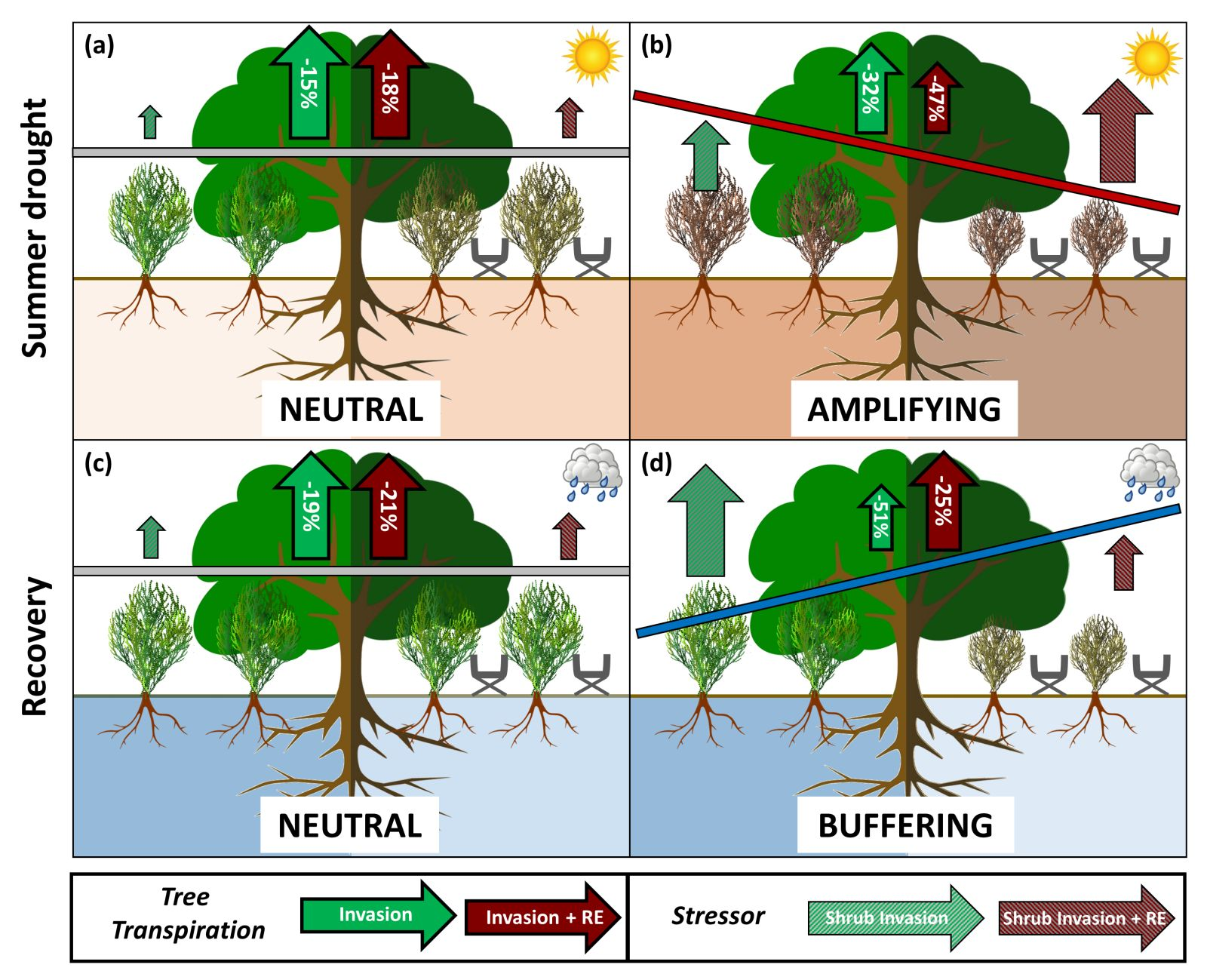Drought during climate change - A threat to ecosystems?
Summer droughts are a typical feature of the Mediterranean climate. Mediterranean ecosystems are generally well adapted to these conditions. But what happens if drought events occur more frequently and/or last longer in the context of climate change? And what is the impact of a simultaneous increase in the occurrence of invasive plant species?
These questions are being investigated by the WG "Regional Climate and Weather Hazards" together with colleagues from the Chair of Ecosystem Physiology at the University of Freiburg and the Forest Research Center at the University of Lisbon as part of a DFG project. One part of the project deals with the meteorological view on droughts on the Iberian Peninsula. The focus is on so-called recurrent drought events, i.e. drought events in consecutive years. These are suspected to increase the drought stress of different plant species, as they can shorten or completely prevent the required recovery period. In a second part of the project, the handling of cork oaks (as an example of a Mediterranean ecosystem) with interacting stress factors is investigated, based on a field study near the small Portuguese town of Vila Viçosa. The focus here is on two stressors that are clearly increasing in the currently changing climate: extreme drought and invasion by the plant species gum rockrose. Drought conditions in the field are simulated with a „Rain Exclusion“ (RE) Experiment. First results of the field study were recently published in the journal “New Phytologist” (Haberstroh et al., 2021).
The findings of the study show that the two stress factors interact more dynamically than expected (cp. Caldeira et al., 2015). While the interacting stressors have no significant effect on the cork oaks in a wet year, they strengthen or weaken each other under drought conditions (see figure). In addition, the cork oaks are better able to recover after a period of extreme drought than the scientists expected. This is especially the case when the invasive gum rockrose itself suffers from severe drought stress. The new research results can help to better understand ecosystems and develop concrete adaptation measures to climate change. For this reason, the field study in Portugal will be continued to collect more data, diagnose longer-term trends, further the development of ecosystem models and quantify the effects of drought in consecutive years.
Caldeira MC, Lecomte X, David TS, Pinto JG, Bugalho MN, Werner C (2015) Synergy of extreme drought and plant invasion reduce ecosystem functioning and resilience. Sci Reports 5, 15110 https://doi.org/10.1038/srep15110
Haberstroh S, Caldeira MC, Lobo-do-Vale R, Martins JI, Moemken J, Pinto JG and Werner C (2021) Nonlinear plant-plant interactions modulate impact of extreme drought and recovery on a Mediterranean ecosystem. New Phytol 231, 1784-1797. https://doi.org/10.1111/nph.17522
Julia Mömken and Joaquim Pinto, WG “Regional Climate and Weather Hazards”

